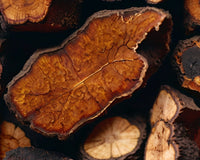Why do you need good blood flow?
It’s hard to believe, but your body has approximately 60,000 miles of blood vessels. Along with your heart and other muscles, they make up your circulatory system. This network of roads carries blood to every corner of your body. But when you have poor circulation, it can slow or block blood flow. This means the cells in your body don't get all the oxygen and nutrients they need.
Signs of poor circulation
When your extremities don't get enough blood, your hands or feet may feel cold or numb. If you have a light skin tone, your legs may appear bluish. Poor circulation can also cause dry skin, brittle nails, and hair loss, especially on the feet and legs. Some men may have difficulty getting or keeping an erection. If you have diabetes, your scrapes, sores, or wounds tend to heal more slowly.
Extinguish tobacco
Nicotine is the active ingredient in cigarettes, e-cigarettes and smokeless tobacco. It can damage the walls of your arteries and make your blood so thick that it can't pass through it. If you smoke, quit. It may be difficult to stick with it, but your pharmacy or doctor's office can help.
Control blood pressure
If it's too high, it can cause arteriosclerosis, a condition that hardens your arteries and helps block blood flow. Aim for 120 over 80 or less, but ask your doctor about the best number for your age and health. Check in on your reading at least once a month. You can purchase a home blood pressure monitor or use a pharmacy kiosk.
Drink more water
Blood is about half water. So you need to stay hydrated to stay active. Aim to drink 8 glasses of water per day. If you exercise or it's hot outside, you will need to drink more water.
Stand at your desk
Sitting for hours at a time is not good for your circulation or your back. It weakens leg muscles and slows blood flow in the legs, which can lead to blood clots. If you're a desk jockey at work, consider a standing desk. It may take a little getting used to, but standing up exercises the valves in the veins in your legs that carry blood to your heart.
Relax and twist
Yoga is a low-impact exercise that jump-starts your blood flow. When you move, it brings oxygen to your cells. When you twist, it sends blood to your organs. The inverted pose diverts blood from the lower part of the body to the heart and brain.
Hit the wall (in a good way)
Not a yogi? When your ankles or feet are swollen, try Legs Up the Wall yoga pose. Also known asviparita karani, this is a simple method of sending blood in another direction. Lie on the floor or yoga mat with your left or right shoulder close to the wall. Turn your body so you can lift your feet up and lean your butt against the wall. Extend your arms to the floor, palms down for balance.
Smoke it
Aerobics means "with oxygen." So when you run, bike, walk, swim and perform similar exercises, you take in more oxygen and transfer it to your muscles. This gets your blood pumping, makes your heart stronger, and lowers your blood pressure. Set a goal to exercise for 30 minutes five to seven days a week. Break it into smaller pieces if needed. If you walk, know that a moderate to vigorous pace—at least 3 miles per hour—provides the best health benefits.
Squat down
Not only does this form of strength training get your blood pumping, it can also help lower blood sugar and relieve back pain. Start with your feet shoulder-width apart and arms at your sides. Now slowly bend your hips and knees, but keep your back straight, as if you were sitting in a chair. When you return to the starting position, bend your arms to maintain balance.
Compress your socks
Put your wardrobe to work. Compression socks squeeze your legs so your blood doesn't stay in them for too long. Instead, it comes back to your heart. Ask your doctor which length and pressure is best for you.
Eat more plants and less meat
Let's face it: there's no harm in eating a balanced diet. eat more fruits and vegetables. Stay away from saturated fat, which can be found in red meat, chicken, cheese, and other animal sources. Avoid too much salt. This will help keep your weight in a healthy range and keep your cholesterol and blood pressure in check—and your arteries clear.
Brush your body, not just your hair
Clean your blood in the right direction. Take a stiff, flat bristled brush and apply it to dry skin. Start at your feet and slowly work your way up, making long movements up your legs and arms. Make circles on your belly and lower back. Dry brushing can also remove dry skin. Do this every day before taking a shower.
Sip or soak
This is a temporary solution, but bathing is a great way to jump-start circulation. Warm water causes your arteries and veins to open wider, allowing more blood to pass through. Hot water or tea will also work.





